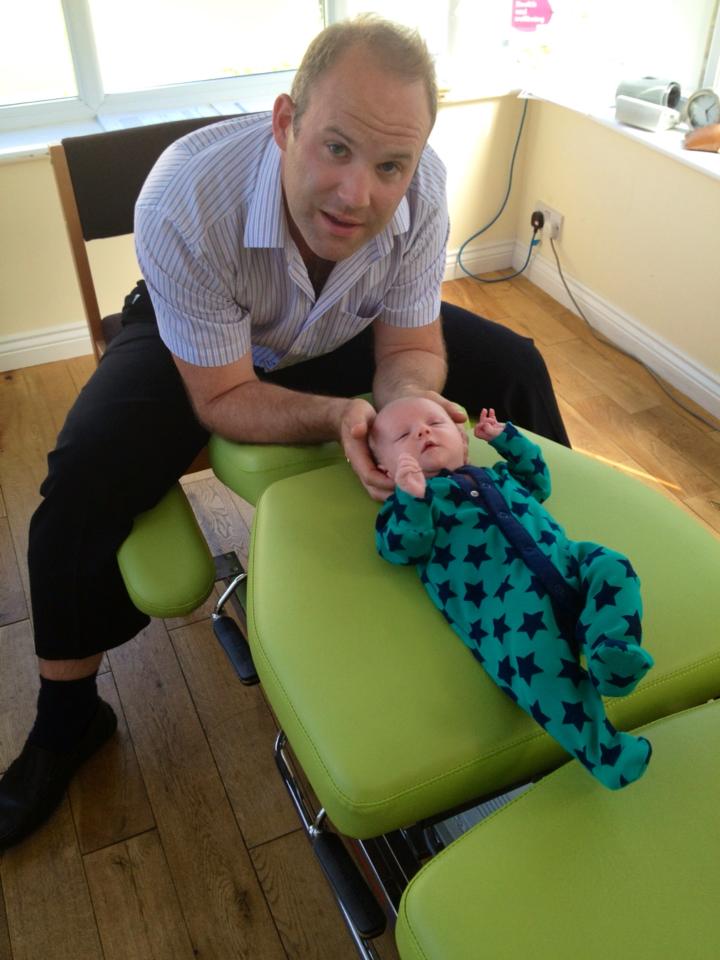Infantile colic can be as troublesome for parents as it is for the child but no one is certain
what colic is or what causes it. It tends to affect babies for the first three to four months of life. They may show signs of tummy pain, such as pulling their legs up and in to their abdomen, while others pass a lot of wind. Persistent crying and fussiness are also characteristic – even when all the child’s obvious needs have been met. Babies tend to grow out of infantile colic but living with a baby in pain for three to four months can seem like a lifetime.
Massage has been shown to help colicky babies but I would urge you to leave cranial (ie head) work to qualified practitioners such as a paediatrically qualified specialist like myself.
Parents can however, try applying gentle pressure on your child’s tummy: for example, hold your baby across the crook of your arm or face down over your knees or upright over your shoulder. Then gently rub your baby’s back and/or tummy. The symptoms of colic may be linked to mild biomechanical disturbances of the spinal joints and may respond to gentle manipulation.
I’ve treated many colicky babies over the years and had very good results after only a few treatments. Parents have commented to me that their child sleeps for longer periods too. Some parents are wary about taking a baby to a chiropractically qualified professional but we are trained to use specific, gentle pressure on the neck and back with our fingertips. Several times I’ve had the child that I’m treating fall asleep on the bench.
A recent example was a mother referred to me by her partner who I have been working with. She was literally brought to tears by the cries of her collicky baby and didn’t know which way to turn. After about 15 to 20 minutes of work with her son Reuben, he had started to calm down and over the last week he is crying less and getting more sleep!

There is a growing body of evidence which backs up my experience. Two studies are of particular interest.
The first study was done by a group of Danish chiropractors who revealed positive results when spinal adjustments were give to a group of infants*.
A second study** divided 50 infants with colic into two groups. The first group received chiropractic spinal manipulation for two weeks; the second group received traditional drug treatment (dimethicone) over the same period.
Results revealed that the chiropractic group improved more than the drug group (less hours spent crying) after the first five days of the study. After day five, the dimethicone group showed little or no reduction in average colic hours per day.
If your baby is colicky, ask for help from relatives, friends and your health visitor. And remember to look after yourself during this exhausting time by ensuring that you are eating properly. If you want to seek help from someone go to the International Chiropractic Paediatric Association website ensure that you ask if they have had experience in treating young babies.
Kind regards
Stuart Lawrence BSc(Hons) MSc(Chiro) DC
Osteomyologist
www.spinalcarecentre.co.uk
All information given is intended for general informational purposes only, and should not be construed as medical advice, medical opinion, diagnosis or treatment.
If you have or suspect you may have a health problem, you should consult your GP.
References
* Klugart et al. (1989). Infantile colic treated by chiropractors: a prospective study of 316 cases, Journal of Manipulative and Physiological Therapeutics, 12, 281–8.
**Wiberg et al. (1999). The short-term effect of spinal manipulation in the treatment of infantile colic: a randomized controlled clinical trial with a blinded observer, Journal of Manipulative and Physiological Therapeutics, 22 (8), 517-22.
